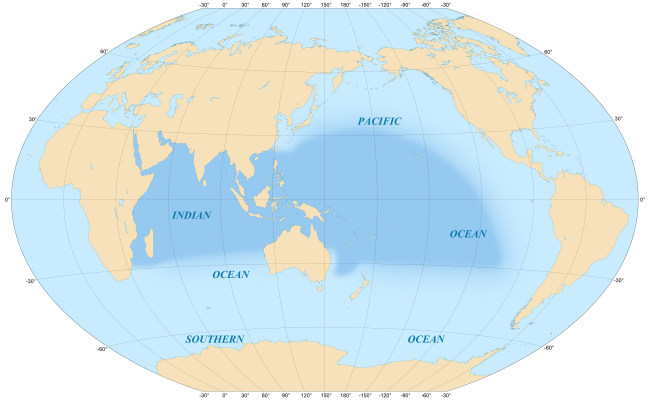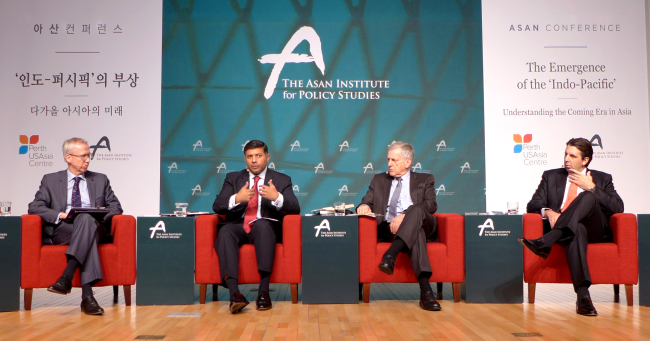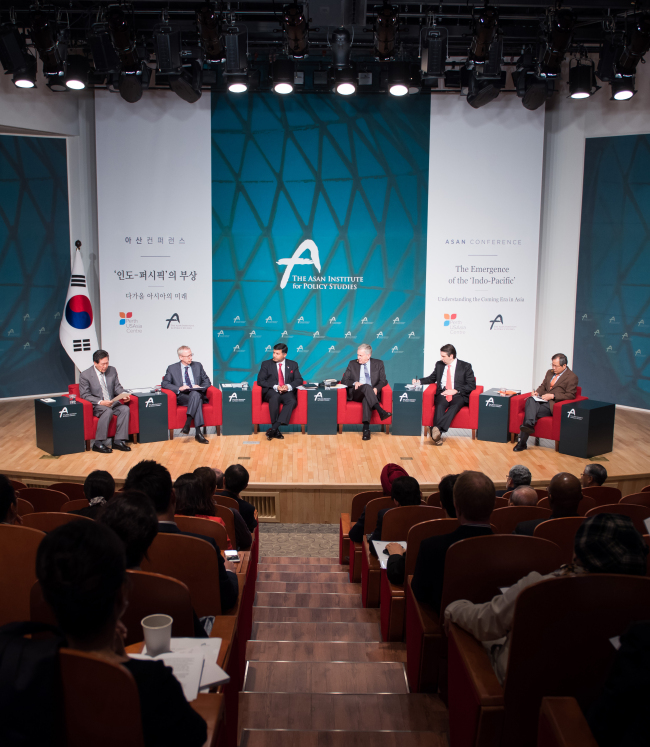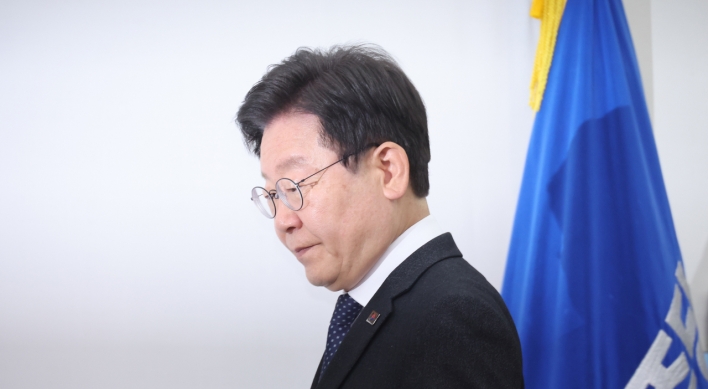A new geopolitical concept is emerging that has far-reaching implications for the global maritime trade and security.
The “Indo-Pacific” region ― comprised of the Indian Ocean’s tropical waters, the western and central Pacific Ocean and the Southeast Asian seas ― has grabbed the attention of policymakers, scholars and naval strategists worldwide.
The construct has come to the fore in recent years, besetting the “Asia-Pacific” and “East Asia” in political discourse, as it better incorporates the rise of China, India and Southeast Asia.
With the Indian Ocean fast becoming the world’s busiest trade and security corridor, and the Asian economies increasingly depending on energy imports from the Middle East, the Indo-Pacific is likely to be “the world’s economic and strategic center of gravity,” writes professor Rory Medcalf of Australian National University in the Open Forum.
The “Indo-Pacific” region ― comprised of the Indian Ocean’s tropical waters, the western and central Pacific Ocean and the Southeast Asian seas ― has grabbed the attention of policymakers, scholars and naval strategists worldwide.
The construct has come to the fore in recent years, besetting the “Asia-Pacific” and “East Asia” in political discourse, as it better incorporates the rise of China, India and Southeast Asia.
With the Indian Ocean fast becoming the world’s busiest trade and security corridor, and the Asian economies increasingly depending on energy imports from the Middle East, the Indo-Pacific is likely to be “the world’s economic and strategic center of gravity,” writes professor Rory Medcalf of Australian National University in the Open Forum.

Leaders and senior policy figures from Australia, India, Indonesia, Japan and the United States are increasingly using the term in speeches and statements, he noted.
"The construct of the Indo-Pacific community is not as far-fetched as it seemed 10 to 15 years ago,” Indian Ambassador Vikram Doraiswami said at a conference in Seoul on Thursday.
The venue at the Asan Institute for Policy Studies gathered diplomats, academics and policymakers to delve into the term’s implications within an evolving international order.
"What has changed over the years is that whereas Japan, Hong Kong, Singapore and South Korea drove Asia’s growth before, it is now China, India and Indonesia,” Doraiswami added.
The top Indian envoy noted that the growing interconnection across the Asian landmass was matched by the corresponding complexity in the Indian and Pacific Oceans, where economic and security interests are converged and contested.
Highlighting that India’s maritime relationships with the U.S., Japan, Korea and others were set to deepen, he added that Asia’s long-term security and economic structures should include the non-regional actors of the U.S., European Union and Russia.

U.S. Ambassador Mark Lippert said President Barack Obama’s first state dinner, which was with former Indian Prime Minister Manmohan Singh in November 2009, was a “deliberate sign” of his administration’s commitment.
Washington’s “rebalance to the Asia-Pacific” policy, formulated by former Secretary of State Hillary Clinton and former Assistant Secretary of State for East Asian and Pacific Affairs, Kurt Campbell, had in mind India’s “Look East” policy, Lippert added.
"The early Asia policy in the Obama administration was based on a three-pronged strategy of forming the right alliances, engaging the emerging powers of China, India and Indonesia, and strengthening alliances with multilateral institutions like the ASEAN and the East Asia Summit,” the American diplomat said.
“The second and third pillars have direct application to the Indo-Pacific concept, by broadening the aperture and setting the stage for an integrated engagement.”
From policy to practice, America’s ties with India have expanded exponentially over the last quarter of a century, from diplomacy and merchantry to security and technology, he said. The U.S. Pacific Command’s area of operation has come to encompass India as well as Northeast and Southeast Asia.
Noting the United States’ “ad hoc multilateral relationships” with regional countries, Lippert suggested promoting a trilateral cooperation covering the creative industries of information technology and high-tech start-ups between America, India and Korea.
Regarding ASEAN, Lippert said that the relations were fleshed out by the Permanent Mission, the Treaty of Amity and Cooperation, defense cooperation and presidential and ministerial visits.

Australian Ambassador Bill Paterson acknowledged that the Indo-Pacific notion had become “orthodoxy” in his government.
“In a way, I’m a spokesman for the concept,” he said. “It has had more currency in Australia than elsewhere, as a kind of a framework in which to conceptualize our national security and Asian economic dynamics, particularly in relation to China and India.”
Paul Johnson, vice chancellor of the University of Western Australia, said: “We can think of the oceans as separating us, but also drawing us together. Just as the ocean currents circulate, so do the trade.”
Johnson pointed to “the massively changing economic opportunities” across the sea from India to Japan, which are linked through a series of multilateral and bilateral trade regimes.
“We also need to think of soft power, education and tourism in connecting the countries,” he said. “It’s difficult to really hate another country if you studied or travelled there. We can build trust and respect through these interactions.”
Chun Yung-woo, chairman of the Korean Peninsula Future Forum and Korea’s former Second Vice Foreign Minister (2009-10), stressed protecting the sea lines of communications from Korea to South China Sea, the Malacca Straits and the Indian Ocean, where energy is transported across from the Middle East.
“Energy security is national security,” he emphasized. “Over 70 percent of Korea’s energy import goes through the Indian Ocean, and 90 percent through the South China Sea.”
Despite the vital importance, Korea has been unable to devote much diplomatic resource and attention there, according to Chun, as Seoul was perennially exhausted by North Korea, Japan and China.
As the Chinese economy slowed down and became saturated, he hinted that the Indian Ocean would be the next blue ocean. In terms of national security, a rising India could counterbalance a rising China, he argued.
“If Korea wants to mitigate potential military threats, some sort of a strategic balance would be necessary,” he asserted. “We cannot rely entirely on the U.S. military. Within the region, restoring a westerly strategic balance would help.”
By Joel Lee (joel@heraldcorp.com)
-
Articles by Korea Herald





![[Herald Interview] 'Amid aging population, Korea to invite more young professionals from overseas'](http://res.heraldm.com/phpwas/restmb_idxmake.php?idx=644&simg=/content/image/2024/04/24/20240424050844_0.jpg&u=20240424200058)












![[KH Explains] Korean shipbuilding stocks rally: Real growth or bubble?](http://res.heraldm.com/phpwas/restmb_idxmake.php?idx=652&simg=/content/image/2024/04/25/20240425050656_0.jpg&u=)

